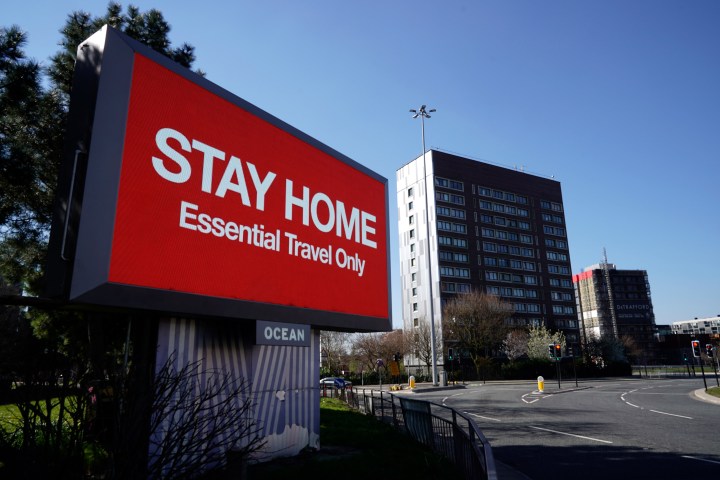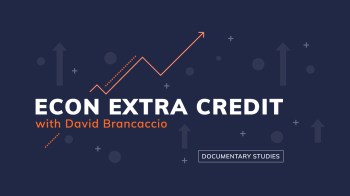
Economists are measuring the cost effectiveness of coronavirus lockdowns
Economists are measuring the cost effectiveness of coronavirus lockdowns

This is part of our “Econ Extra Credit” project, where we read an introductory economics textbook provided by the nonprofit Core Econ together with our listeners.
We all need to understand the economic fundamentals right now, more than ever. Get a refresher with our Econ Extra Credit newsletter.
Many states are eager to lift restrictions on nonessential business operations in order to reduce the economic toll of the novel coronavirus. In Georgia, bowling alleys, barbershops and gyms will start reopening on Friday, with restaurants and movie theaters to follow Monday. South Carolina has already begun to reopen retail stores and public beaches.
As state and local governments determine when and how to resume business, the goal of limiting the virus’s damage to the economy is usually pitted against the goal of saving lives. But some experts say they’re not necessarily at odds, warning of the economic cost of the deaths that would come from lifting business restrictions too soon and allowing the virus to spread uncontrolled.
Sergio Rebelo, an economist at the Kellogg School of Management at Northwestern University, has developed an economic model to assess the cost effectiveness of these lockdowns we’re all enduring, measured in dollars and human lives. He says even the most extreme of scenarios — say, a strict lockdown that lasts one year — generally is cheaper, once you consider the dollar value of a human life.
We are using blunt containment because we do not know the health status of the population. . . So a combination of testing, contact tracing — those technologies will allow us to open the economy gradually.
Sergio Rebelo
Rebelo says a recession is pretty much unavoidable in any scenario — and abandoning coronavirus containment plans won’t fix our economic woes.
“It is important to understand that even if you don’t do anything [to contain the virus], you still get a recession,” he told “Marketplace Morning Report” host David Brancaccio. “The reason being that you still have an epidemic raging and people will take precautions. They will shop less in retail stores. They will try to limit the amount of time they spend at work. Productivity will be lower because people will distance from each other. So we still have a recession even if you have no containment, but the virus will spread much more. And by spreading, the death will be higher.”
He projects a yearlong lockdown to cost around $4.2 trillion, or 22% of the economy. Lifting containment measures would help — the economy would only shrink by about 7% — but could lead to 500,000 additional deaths, or $6.1 trillion all told.
Rebelo explained what these numbers mean for U.S. reopening plans. The following is an edited transcript of the conversation.
David Brancaccio: If government pushes for a containment strategy for a good long while, we will save so many lives, but the economy in your model really shrinks.
Sergio Rebelo: That’s right, it takes a huge beating. So I think what those numbers say is that we need to move forward from this blunt containment.
“People don’t take into account that if they are infected, they may infect others. . . That’s where government comes in. This is why leaving the economy to its own devices will not produce an optimal solution. Because there’s this externality.”
Sergio Rebelo
The reason we are using this kind of blunt containment that we modeled is because we do not know the health status of the population. We really don’t have a good handle of how many people are infected, how many people have recovered and have immunity to the virus. So a combination of testing, contact tracing — those technologies will allow us to open the economy gradually and bring the economy back. The longer the economy is in lockdown, the bigger the scars and the harder it is to come back.
Now, you have to take into account this infection externality. People don’t take into account that if they are infected, they may infect others. It’s a bit like pollution, you know — “I’m just one person, what’s the big deal if I drive around in my car?” But because we all think in the same way, there ends up being way too much pollution. So that’s why there’s room for government action.
Brancaccio: But isn’t that interesting? Economics focuses a lot on this idea of an externality — that’s when you take an action that you don’t actually have to pay for. So what you’re saying is, this is where policy, this is where government comes in.
Rebelo: That’s where government comes in. This is why leaving the economy to its own devices will not produce an optimal solution, because there’s this externality. You know, “I have a little bit of a fever, maybe I could infect other people but I’m not sure even if I’m infected, and I need to get something from the supermarket, so I’ll do a quick run.” And if everybody thinks that way, there’s way too much infection going on, and we end up having a very high death toll.
One component of externalities is the medical preparedness. We have limited capacity in hospitals. So if we have a lot of infected people, then the death rate will not stay constant but will shoot up just like we saw in the early days of the epidemic in Italy. And that is the reason why these measures, if the only tool you have is this blunt containment, it’s worthwhile putting them in place. Because you really want to avoid what is a tragic situation with mortality rates that are very, very high just because you cannot care for the sick.
Brancaccio: Back to this idea of blunt containment (the whole country closed down for perhaps a year) or a free-for-all (people just go about their business and lots of people die), what’s being contemplated is something in between. For instance, smart lockdowns, lockdowns for temporary periods until the immediate danger passes. I mean, that’s what the real world is going to bring us.
Rebelo: I think so. I think we’re going to move towards smart containment, that’s unavoidable. Because ideally you’d like to quarantine the people that get infected. Suppose you could test people very, very frequently. Then you’d just quarantine to ones that got infected, and very quickly, you’d get the number of infected people to shrink to zero. But that requires enormous testing capacity that’s not available at the moment. However, we can ramp up toward that.
Brancaccio: I’ll tell you what I wish for at some level is a sudden innovation in technology that helps us treat this virus that ruins your model.
Rebelo: I would love that too. I want to say that also the calculations in our model are for the worst-case scenario. Because the model takes into account that treatments can arrive and vaccines can arrive, but then we are discussing the scenario where these innovations do not arrive. So we’re really looking at this worst-case scenario.
Vaccines make a difference to the optimal policy because vaccines typically do not help those that have become already infected. And that’s why when a vaccine is in the works, you want some tough measures initially because you really want to reduce the number of infected people. Because even if the vaccine arrives, the infected people will not be helped.
There’s a lot happening in the world. Through it all, Marketplace is here for you.
You rely on Marketplace to break down the world’s events and tell you how it affects you in a fact-based, approachable way. We rely on your financial support to keep making that possible.
Your donation today powers the independent journalism that you rely on. For just $5/month, you can help sustain Marketplace so we can keep reporting on the things that matter to you.

















